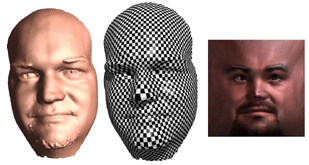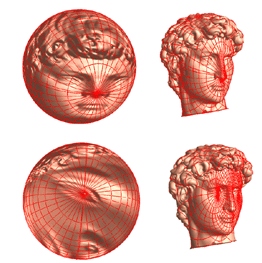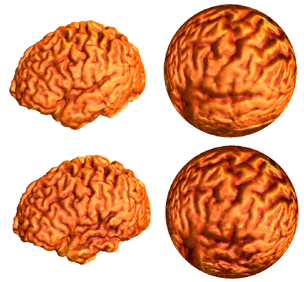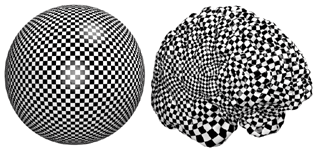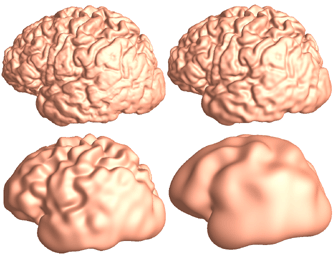Genus Zero Surface Conformal Mapping and Its Application to Brain Surface Mapping
Xianfeng Gu, Yalin Wang, Tony F. Chan, Paul M. Thompson, and Shing-Tung Yau
Abstract
It is well known that any genus zero surface can be mapped conformally onto the sphere and any local portion thereof onto a disk. However, it is not trivial to find a general method which finds a conformal mapping between two general genus zero surfaces. We propose a new variational method which can find a unique mapping between any two genus zero manifolds by minimizing the harmonic energy of the map. We demonstrate the feasibility of our algorithm by applying it to the cortical surface matching problem. We use a mesh structure to represent the brain surface. Further constraints are added to ensure that the conformal map is unique. Empirical tests on MRI data show that the mappings preserve angular relationships, are stable in MRIs acquired at different times, and are robust to differences in data triangulation, and resolution. Compared with other brain surface conformal mapping algorithms, our algorithm is more stable and has good extensibility.
Figures (click on each for a larger version):
Related Publications
- X. Gu, Y. Wang, T.F. Chan, P.M. Thompson and S.-T. Yau, “ Genus Zero Surface Conformal Mapping and Its Application to Brain Surface Mapping“, IEEE Transaction on Medical Imaging, 23(8), Aug. 2004, pp. 949-958
- Y. Wang, X. Gu, T. F. Chan, P. M. Thompson and S.-T. Yau, “ Intrinsic Brain Surface Conformal Mapping using a Variational Method“, Medical Imaging 2004: Image Processing, J. M. Fitzpatrick and M. Sonka (Eds.) Proceedings of SPIE, Vol. 5370, 2004, pp. 241-252
- X. Gu, Y. Wang, T. F. Chan, P. M. Thompson and S.-T. Yau, “ Genus Zero Surface Conformal Mapping and Its Application to Brain Surface Mapping“, C. Taylor and J. Alison Noble (Eds.), Information Processing in Medical Imaging,18th International Conference, IPMI 2003, Ambleside, UK, July 2003. Proceedings, pp. 172-184
